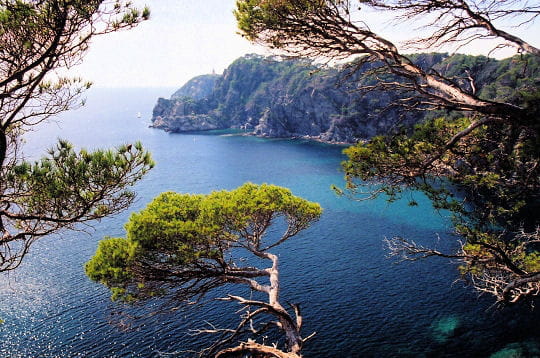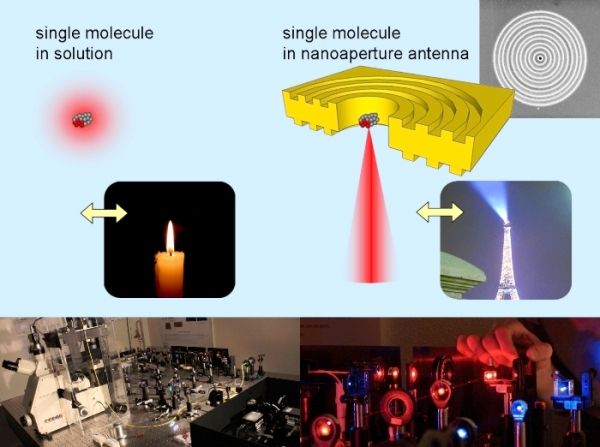Demonstrating scientific independence
Last week, I had a (long) discussion with French colleagues about the most relevant way to show scientific independence. The issue in France is that as young researchers (age typically < 40), we are NOT intended to run our own group, but have to be integrated into a (larger) group lead by a so-called "class A" researcher (understand full professor or CNRS director). Leading his/her own young research group is not the point in France, contrarily to colleagues in UK, Germany or Spain.
The crazyness of this situation is that all young researcher I know are performing their research independently on their senior group leader. All this looks like mostly an obscure French administrative issue: young researchers can be scientifically autonomous within a group, but not fully administratively autonomous.
So, how to demonstrate independence? This can be a real issue in fierce funding competition at European level. The best answer I can provide is to go back to the scientific output, ie peer-reviewed papers, and check for corresponding authors and last authors. For my own case, here is the kind of graph to show my transition to independence:

Data are in % of total articles per year (for 2011 it also includes submitted and in press manuscripts). Of course, this does not constitute the sole evaluation criterion, yet combined with publications list and brief scientific achievements description, I think it can provide a fair overview.
Summer School on Plasmonics Porquerolles SSOP 2
Many of you were awaiting it (I can see it from the visits and research keywords pointing to this blog), here it comes for your greatest nanoplasmonic pleasure : the Summer School on Plasmonics 2nd edition 2011 in the beautiful Porquerolles island. Book the dates : October 3 to October 7, 2011.
See the official website. Registration deadline: please apply by May 30th.
This time, I will give a tutorial talk, so I'm not part of the organization committee (which means I am not the person to contact for help in the registration, abstract submission, venue, etc...)
Also, for lecturers of the first edition, I know many of you really enjoyed the summer school and wanted to come back for the second edition. However, the organization committee decided to change all the lecturers for each edition, and not to take the same person twice. This is a tough but fair rule (Gordon Research Conferences apply the same).


Assistant Professor position open on nanophotonics
The Fresnel Institute is hiring a top qualified researcher to fill an assistant professor (Maitre de Conference in French) position. The research topic will primarily deal with theoretical simulations of nanophotonics. Read the full details here, and the official announcement here. Deadline for applications March 25th.
![]()
Research highlighted by CNRS
Our latest research published in a Nano Letters article has been selected by the CNRS in the "highlighted news" section. Here is an English version:
Molecular Nano-Headlight: turning a single molecule into a bright source of light
Looking for single molecules under the microscope. Many physical and chemical methods aim at analyzing single molecule behaviors. However, single molecule detection is a challenging task, due to the very weak amount of light that is radiated by a single molecule.
Nano-Antennas to control the emission of light. To increase and control the light emitted by a single molecule, scientists from the Fresnel Institute and the Institute of Supramolecular Science and Engineering ISIS use metal antennas of nanometer dimensions. These antennas are designed to work for light as conventional antennas work for radio waves. Both the emission intensity and direction can be controled down at the single molecule level, which realizes a major breakthrough.
The researchers use a special kind of nanoantenna made of an aperture surrounded by circular corrugations milled in a gold film. This antenna transforms a standard molecule into a bright unidirectional fluorescence source: the fluorescence intensity is enhanced up to 120 fold, and almost all the light is emitted into a narrow cone in the vertical direction.
The bright emission and narrow directionality enable the detection of single molecules with a simple microscope, and improve the effectiveness of fluorescence-based applications. This demonstration is of high relevance for the development of biochemical sensing methods, light emitting devices, and quantum information processing.

NanoBioPhotonics Conferences selection 2011
Here is a quick list of conferences where my group's work will be presented. It also provides a short selection of European conferences on nano-bio-photonics, check the weblinks:
- March 14th: invited seminar at FOM-AMOLF, Amsterdam
- March 17th: "Antennas and near-field electromagnetics" workshop of the GdR Ondes, Paris
- May 16th-20th: invited course at the "Nano-objects and interfaces" NOIS 2011 topical CNRS school, Anglet
- May 19th-21st: "Molecular Plasmonics" conference, Jena
- May 23rd-26th: CLEO-EQEC Europe conference, Munich
- July 04th-07th: invited talk at "Coloq'12 Lasers and quantum optics colloqium", Marseille
- September 07th-09th: "Single molecule spectroscopy workshop", Berlin
- October 03rd-07th: invited talk at "Summer School on Plasmonics II SSOP2", Porquerolles




